Tuskegee syphilis experiment
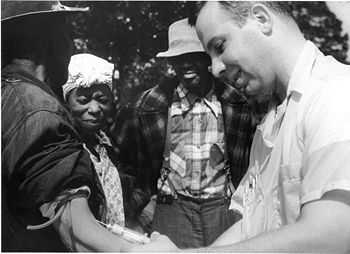
The Tuskegee syphilis experiment[1] was an infamous clinical study conducted between 1932 and 1972 by the U.S. Public Health Service to study the natural progression of untreated syphilis in rural African American men who thought they were receiving free health care from the U.S. government.[1]
The Public Health Service, working with the Tuskegee Institute, began the study in 1932. Investigators enrolled in the study a total of 600 impoverished sharecroppers from Macon County, Alabama; 399 who had previously contracted syphilis before the study began, and 201[2] without the disease. For participating in the study, the men were given free medical care, meals, and free burial insurance. They were never told they had syphilis, nor were they ever treated for it. According to the Centers for Disease Control, the men were told they were being treated for "bad blood", a local term for various illnesses that include syphilis, anemia, and fatigue.
The 40-year study was controversial for reasons related to ethical standards; primarily because researchers knowingly failed to treat patients appropriately after the 1940s validation of penicillin as an effective cure for the disease they were studying. Revelation of study failures by a whistleblower led to major changes in U.S. law and regulation on the protection of participants in clinical studies. Now studies require informed consent (though foreign consent procedures can be substituted which offer similar protections; such substitutions must be submitted to the Federal Register unless statute or Executive Order require otherwise),[3] communication of diagnosis, and accurate reporting of test results.[4]
By 1947, penicillin had become the standard treatment for syphilis. Choices available to the doctors involved in the study might have included treating all syphilitic subjects and closing the study, or splitting off a control group for testing with penicillin. Instead, the Tuskegee scientists continued the study without treating any participants and withholding penicillin and information about it from the patients. In addition, scientists prevented participants from accessing syphilis treatment programs available to others in the area.[5] The study continued, under numerous US Public Health Service supervisors, until 1972, when a leak to the press eventually resulted in its termination on November 16.[6] The victims of the study included numerous men who died of syphilis, wives who contracted the disease, and children born with congenital syphilis.[7] Physicians in this time were fixated on African American sexuality, and the willingness of African Americans to have sexual relations with those who were infected led them to believe that the responsibility for the acquisition of the disease was solely upon the individual. This need to place blame blinded the physicians to find ways to help the innocent infants born with the disease through no fault of their own.[8]
The Tuskegee Syphilis Study, cited as "arguably the most infamous biomedical research study in U.S. history,"[9] led to the 1979 Belmont Report and the establishment of the Office for Human Research Protections (OHRP).[10] It also led to federal laws and regulations requiring Institutional Review Boards for the protection of human subjects in studies involving human subjects. The Office for Human Research Protections (OHRP) manages this responsibility within the US Department of Health and Human Services (HHS).[11]
History
Study clinicians
| “ | For the most part, doctors and civil servants simply did their jobs. Some merely followed orders, others worked for the glory of science. | ” |
— John Heller, Director of the Public Health Service's Division of Venereal Diseases[12] |
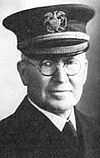

The venereal disease section of the U.S. Public Health Service (PHS) formed a study group in 1932 at its national headquarters. Taliaferro Clark was credited with its origin. His initial goal was to follow untreated syphilis in a group of black men for 6 to 9 months, and then follow up with a treatment phase.[citation needed] When he understood the intention of other study members to use deceptive practices, Clark disagreed with the plan to conduct an extended study. He retired the year after the study began.
Representing the PHS, Clark had solicited the participation of the Tuskegee Institute (a well-known historically black college in Alabama, now known as Tuskegee University) and also the inclusion of the Arkansas regional PHS office. Eugene Dibble, an African American doctor, was head of the John Andrew Hospital at the Tuskegee Institute. Oliver C. Wenger, a Caucasian, was director of the regional PHS Venereal Disease Clinic in Hot Springs, Arkansas. He and his staff took a lead in developing study procedures.
Wenger and his staff played a critical role in developing early study protocols. Wenger continued to advise and assist the Tuskegee Study when it turned into a long-term, no-treatment observational study.[13]
Raymond A. Vonderlehr was appointed on-site director of the research program and developed the policies that shaped the long-term follow-up section of the project. For example, he decided to gain the "consent" of the subjects for spinal taps (to look for signs of neurosyphilis) by depicting the diagnostic test as a "special free treatment". Vonderlehr retired as head of the venereal disease section in 1943, shortly after penicillin had first been shown to be a cure for syphilis.
Several African American health workers and educators associated with Tuskegee Institute helped the PHS to carry out its experimentation and played a critical role in its progression, though the extent to which they were aware of methodology of the study is not clear in all cases. Robert Russa Moton, the head of Tuskegee Institute at the time, and Eugene Dibble, of the Tuskegee Medical Hospital, both lent their endorsement and institutional resources to the government study. Nurse Eunice Rivers, an African-American trained at Tuskegee Institute who worked at its affiliated John Andrew Hospital, was recruited at the start of the study.
Vonderlehr was a strong advocate for Nurse Rivers' participation, as she was the direct link to the community. During the Great Depression of the 1930s, the Tuskegee Study began by offering lower class African Americans, who often could not afford health care, the chance to join "Miss Rivers' Lodge". Patients were to receive free physical examinations at Tuskegee University, free rides to and from the clinic, hot meals on examination days, and free treatment for minor ailments.
Based on the available health care resources, Nurse Rivers believed that the benefits of the study to the men outweighed the risks.
As the study became long term, Nurse Rivers became the chief person with continuity. Unlike the changing state of national, regional and on-site PHS administrators, doctors, and researchers, Rivers stayed at Tuskegee University. She was the only study staff person to work with participants for the full 40 years. By the 1950s, Nurse Rivers had become pivotal to the study—her personal knowledge of the subjects enabled maintenance of long-term follow up.
Historians found evidence that most of the African American staff that assisted the Tuskegee Experiments were under the belief that they were part of a medical experiment that gave them the opportunity to act in the best interests of poor Black residents of Tuskegee.
By the late 1940s, doctors, hospitals and public health centers throughout the country routinely treated diagnosed syphilis with penicillin. In the period following World War II, the revelation of the Holocaust and related Nazi medical abuses brought about changes in international law. Western allies formulated the Nuremberg Code to protect the rights of research subjects. No one appeared to have reevaluated the protocols of the Tuskegee Study according to the new standards.
In 1972 the Tuskegee Study was brought to public and national attention by a whistleblower, who gave information to the Washington Star and the New York Times. Heller of PHS, who in later years of the study led the national division, still defended the ethics of the study, stating: "The longer the study, the better the ultimate information we would derive."[14] Author James Jones remarks about this attitude: "The men's status did not warrant ethical debate. They were subjects, not patients; clinical material, not sick people."[15]
-

Raymond A. Vonderlehr (medical doctor)
-

John Heller (medical doctor)
-

Eugene Dibble (medical doctor)
-

Eunice Rivers (nurse)
Study details
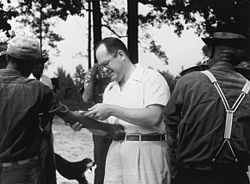
A Norwegian study in 1928 had reported on the pathologic manifestations of untreated syphilis in several hundred white males. This study is known as a retrospective study since investigators pieced together information from the histories of patients who had already contracted syphilis but remained untreated for some time.
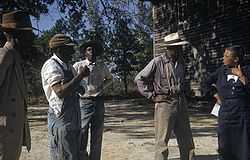
The Tuskegee study group decided to build on the Oslo work and perform a prospective study to complement it. In the earlier phases of the study this was not inherently unethical since there was nothing the investigators could do therapeutically at the time. Researchers could study the natural progression of the disease as long as they did not harm their subjects. They reasoned that the knowledge gained would benefit humankind; however, it was determined afterward that the doctors did harm their subjects by depriving them of appropriate treatment once it had been discovered. The study was characterized as "the longest non-therapeutic experiment on human beings in medical history."[5]
The US Health Service of the Tuskegee study, began as a clinical trial of the incidence of syphilis in the Macon County population. At that time, it was believed that the effects of syphilis depended on the race of those affected. For African Americans, physicians believed that their cardiovascular system was more affected than the central nervous system.[16] Initially, subjects were studied for six to eight months and then treated with contemporary methods including Salvarsan, mercurial ointments, and bismuth. These methods were, at best, mildly effective. The disadvantage that these treatments were all highly toxic was balanced by the fact that no other methods were known. The Tuskegee Institute participated in the study, as its representatives understood the intent was to benefit public health in the local poor population.[17] The Tuskegee University-affiliated hospital effectively loaned the PHS its medical facilities and other predominantly black institutions and local black doctors participated as well. The Rosenwald Fund, a major Chicago-based philanthropy devoted to black education and community development in the South, provided financial support to pay for the eventual treatment of the patients. They had previously collaborated with Public Health Services in a study of syphilis prevalence in over 2,000 black workers in Mississippi's Delta Pine and Land Company in 1928, and helped provide treatment for 25% of the workers who had tested positive for syphilis.[18] Study researchers initially recruited 399 syphilitic Black men, and 201 healthy Black men as controls.
Continuing effects of the Stock Market Crash of 1929 and the beginning of the Great Depression led the Rosenwald Fund to withdraw its offer of funding. Study directors issued a final report as they thought this might mean the end of the study once funding to buy medication for the treatment phase of the study was withdrawn.
Medical ethics considerations were limited from the start and rapidly deteriorated. To ensure that the men would show up for the possibly dangerous, painful, diagnostic, and non-therapeutic spinal taps, the doctors sent the 400 patients a misleading letter titled "Last Chance for Special Free Treatment". The study also required all participants to undergo an autopsy after death in order to receive funeral benefits. After penicillin was discovered as a cure, researchers continued to deny such treatment to many study participants. Many patients were lied to and given placebo treatments so researchers could observe the full, long-term progression of the fatal disease.[17]

The Tuskegee Study published its first clinical data in 1934 and issued their first major report in 1936. This was prior to the discovery of penicillin as a safe and effective treatment for syphilis. The study was not secret since reports and data sets were published to the medical community throughout its duration.
During World War II, 250 of the subject men registered for the draft. These men were consequently diagnosed as having syphilis at military induction centers and ordered to obtain treatment for syphilis before they could be taken into the armed services.[19]
PHS researchers attempted to prevent them from getting treatment, thus depriving them of chances for a cure. A PHS representative was quoted at the time saying: "So far, we are keeping the known positive patients from getting treatment."[19] Despite this, 96% of the 90 original test subjects reexamined in 1963 had received either arsenical or penicillin treatments from another health provider.[20]
By 1947 penicillin had become standard therapy for syphilis. The US government sponsored several public health programs to form "rapid treatment centers" to eradicate the disease. When campaigns to eradicate venereal disease came to Macon County, study researchers prevented their patients from participating.[19]
By the end of the study in 1972, only 74 of the test subjects were alive. Of the original 399 men, 28 had died of syphilis, 100 were dead of related complications, 40 of their wives had been infected and 19 of their children were born with congenital syphilis.
Non-consensual experiments in Guatemala
In October 2010 it was revealed that in Guatemala, U.S. Public Health Service doctors went even further. It was reported that from 1946 to 1948, American doctors deliberately infected prisoners, soldiers, and patients in a mental hospital with syphilis and, in some cases, gonorrhea, with the cooperation of some Guatemalan health ministries and officials. A total of 696 men and women were exposed to syphilis without the informed consent of the subjects. When the subjects contracted the disease they were given antibiotics though it is unclear if all infected parties were cured.[21]
Wellesley College's historian Susan Reverby discovered records of the experiment while examining archives of John Charles Cutler, a government researcher involved in the now infamous Tuskegee study.[22] In October 2010, the U.S. formally apologized to Guatemala for conducting these experiments.[23]
Study termination

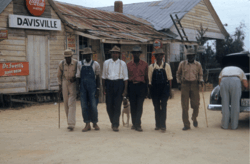

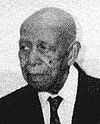
In 1966 Peter Buxtun, a PHS venereal-disease investigator in San Francisco, sent a letter to the national director of the Division of Venereal Diseases to express his concerns about the ethics and morality of the extended Tuskegee Study. The Center for Disease Control (CDC), which by then controlled the study, reaffirmed the need to continue the study until completion; i.e., until all subjects had died and been autopsied. To bolster its position, the CDC sought, and gained support for the continuation of the study, from local chapters of the National Medical Association (representing African-American physicians) and the American Medical Association (AMA).
In 1968 William Carter Jenkins, an African-American statistician in the PHS, part of the Department of Health, Education, and Welfare (HEW), founded and edited The Drum, a newsletter devoted to ending racial discrimination in HEW. The cabinet-level department included the CDC. In The Drum, Jenkins called for an end to the Tuskegee Study. He did not succeed; it is not clear who read his work.[24]
Buxtun finally went to the press in the early 1970s. The story broke first in the Washington Star on July 25, 1972. It became front-page news in the New York Times the following day. Senator Edward Kennedy called Congressional hearings, at which Buxtun and HEW officials testified. As a result of public outcry the CDC and PHS appointed an ad hoc advisory panel to review the study. It determined the study was medically unjustified and ordered its termination. As part of the settlement of a class action lawsuit subsequently filed by the NAACP, the U.S. government paid $9 million (unadjusted for inflation) and agreed to provide free medical treatment to surviving participants and to surviving family members infected as a consequence of the study.
A collection of materials compiled to investigate the study is held at the National Library of Medicine in Bethesda, Maryland.[25]
Aftermath
In 1974 Congress passed the National Research Act and created a commission to study and write regulations governing studies involving human participants. On May 16, 1997, President Bill Clinton formally apologized and held a ceremony for the Tuskegee study participants: "What was done cannot be undone. But we can end the silence. We can stop turning our heads away. We can look at you in the eye and finally say on behalf of the American people, what the United States government did was shameful, and I am sorry ... To our African American citizens, I am sorry that your federal government orchestrated a study so clearly racist."[26] Five of the eight remaining study survivors attended the White House ceremony.
The Tuskegee Syphilis Study significantly damaged the trust of the black community toward public health efforts in the United States.[27] The study may also have contributed to the reluctance of many poor black people to seek routine preventive care.[28] However, recent studies have challenged the degree to which knowledge of the Tuskegee experiments have kept black Americans from participating in medical research.[29][30][31][32] Distrust of the government because of the study contributed to persistent rumors in the black community that the government was responsible for the HIV/AIDS crisis by introducing the virus to the black community.[33]
An interview in February on ABC's PrimeTime Live between ABC's Jay Schadler and Dr. Sidney Olansky, Public Health Services director of the study from 1950 to 1957, further showed why the Tuskegee study had damaged the trust between medical personnel and much of the African American community. When asked about the lies that were told to the study subjects, Olansky replied with "The fact that they were illiterate was helpful, too, because they couldn’t read the newspapers. If they were not, as things moved on they might have been reading newspapers and seen what was going on." [34]
Ethical implications

After penicillin was found to be an effective treatment for syphilis, the study continued for another 25 years without treating those suffering from the disease. After the study and its consequences became front-page news, it was ended in a day.[35] The aftershocks of this study, and other human experiments in the United States, led to the establishment of the National Commission for the Protection of Human Subjects of Biomedical and Behavioral Research and the National Research Act. The latter requires the establishment of institutional review boards (IRBs) at institutions receiving federal support (such as grants, cooperative agreements, or contracts).
In popular culture
- David Feldshuh wrote a stage play in 1992 based on the history of the Tuskegee study, titled Miss Evers' Boys. It was a runner-up for the 1992 Pulitzer Prize in drama.[36] In 1997 it was adapted for an HBO made-for-TV movie. The HBO adaptation was nominated for eleven Emmy Awards,[37] and won in four categories.[38]
- A 33 second song "Tuskeegee #626" featured on Gil Scott-Heron's 1977 Bridges LP with lyrics detailing and condemning the Tuskegee Syphilis Experiments.
- In the pilot episode of the TV series House, M.D., the Dean of Medicine Dr. Lisa Cuddy makes reference to Dr. Gregory House that his treatment method of his patient by guessing has not been used since Tuskegee.
- In the movie Half-Baked Thurgood Jenkins (Dave Chappelle) mentions to a scientist that his grandfather was in the Tuskegee Experiments, in order to demonstrate his willingness to participate in the federal government's study of marijuana. Dave's grandfather in real life was in fact a subject of the Tuskegee Experiments, surviving the experiments led to him living with a permanent blindness.[citation needed]
- On Real Time with Bill Maher, Spike Lee cited the government's past atrocities including the Tuskegee Study of Untreated Syphilis in the Negro Male when commenting on the federal government's lack of response to African-American community of New Orleans during the aftermath of the 2005 Hurricane Katrina catastrophe.[39]
See also
- Declaration of Geneva
- Declaration of Helsinki
- Eugenics in the United States
- Human experimentation in the United States
- Human subject research
- International Conference on Harmonisation for Registration of Pharmaceuticals
- Operation Whitecoat
- Nazi human experimentation
- Project 4.1
- Shiloh Missionary Baptist Church
- Unit 731
- World Medical Association
References
- ↑ 1.0 1.1 "Tuskegee Study - Timeline". NCHHSTP. CDC. 2008-06-25. Retrieved 2008-12-04.
- ↑ Center for disease control and prevention
- ↑ "Code of Federal Regulations Title 45 Part 46 Protections of Human Subjects 46.1.1(i)" (PDF). U.S. Department of Health and Humand Services. 2009-01-15. Retrieved 2010-02-22.
- ↑ "Final Report of the Tuskegee Syphilis Study Legacy Committee". Tuskegee Syphilis Study Legacy Committee. 1996-05-20. Retrieved 2008-12-04.
- ↑ 5.0 5.1 Jones J (1981). Bad Blood: The Tuskegee Syphilis Experiment. New York: Free Press. ISBN 0-02-916676-4.
- ↑ ""I Didn’t Want to Believe It": Lessons from Tuskegee 40 Years Later". Planned Parenthood Advocates of Arizona. 2012-11-25. Retrieved 2012-11-25.
- ↑ Heller J (1972-07-26). "Syphilis Victims in U.S. Study Went Untreated for 40 Years; Syphilis Victims Got No Therapy". New York Times. Associated Press. Retrieved 2008-12-04.
- ↑ Jones, James H. "A Notoriously Syphilis-Soaked Race." Bad Blood. New York: Free, 1993. 22-23. Print.
- ↑ Katz RV, Kegeles SS, Kressin NR, et al. (November 2006). "The Tuskegee Legacy Project: willingness of minorities to participate in biomedical research". J Health Care Poor Underserved 17 (4): 698–715. doi:10.1353/hpu.2006.0126. PMC 1780164. PMID 17242525.
- ↑ Office for Human Research Protections (OHRP) (2005-06-23). "Protection of Human Subjects". Title 45, Code of Federal Regulations, Part 46. US Department of Health and Human Services. Retrieved 2008-12-04.
- ↑ "Office for Human Research Protections". Department of Health and Human Services. 2008-09-28. Retrieved 2008-12-04.
- ↑ Cockburn, Alexander; Jeffrey St. Clair (1998). Whiteout: The CIA, Drugs and the Press. London: Verso. p. 67. ISBN 1-85984-139-2.
- ↑ DiClemente RJ, Blumenthal DS (2003). Community-based health research: issues and methods. New York: Springer Pub. p. 50. ISBN 0-8261-2025-3.
- ↑ Jones, James H. Bad Blood: The Tuskegee Syphilis Experiment, p. 179.
- ↑ Jones, James H. Bad Blood: The Tuskegee Syphilis Experiment, p. 179. (N.B.: This quote is often falsely attributed to Heller himself.)
- ↑ Murphy, Timothy F. "The Tuskegee Syphilis Studies." Case Studies in Biomedical Research Ethics. Cambridge: MIT, 2004. 21. Print.
- ↑ 17.0 17.1 Parker, Laura (1997-04-28). "'Bad Blood' Still Flows In Tuskegee Study". USA Today. Retrieved 2008-12-04.
- ↑ Thomas, Stephen B., and Sandra Crouse Quinn. "Light on the Shadow of the Syhpilis Study at Tuskegee." Health Promotion Practice (2001): 235. World Cat. Web. 27 Sept. 2013. <http://westmister.worldcat.org/title/light-on-the-shadow-of-the-syphilis-study-at-tuskeee/oclc/362398586&referer=brief_results>.
- ↑ 19.0 19.1 19.2 "Doctor of Public Health Student Handbook" (PDF). University of Kentucky College of Public Health. 2004. p. 17.
- ↑ Richard A Shweder. "spiked-essays | Essay | Tuskegee re-examined". Spiked-online.com. Retrieved 2012-04-16.
- ↑ Chris McGreal (2010-10-01). "US says sorry for 'outrageous and abhorrent' Guatemalan syphilis tests Experiments in 1940s saw hundreds of Guatemalan prisoners and soldiers deliberately infected to test effects of penicillin". Guardian UK (Guardian News and Media Limited). Retrieved 2010-10-01.
- ↑ Stephen Smith (2010-10-02). "Wellesley professor unearths a horror: Syphilis experiments in Guatemala". Boston Globe (Boston.com). Retrieved 2011-01-18.
- ↑ Maggie Fox (2010-10-01). "US apologizes for '40s syphilis study in Guatemala". Reuters. Retrieved 2011-01-18.
- ↑ Bill Jenkins left the PHS in the mid-1970s for doctoral studies. In 1980, he joined the CDC Division of Sexually Transmitted Diseases, where he managed the Participants Health Benefits Program that ensured health services for survivors of the Tuskegee Study.
- ↑ "Documents on the origin and development of the Tuskegee syphilis study 1921-1973". National Library of Medicine.
- ↑ "Remarks by the President in apology for study done in Tuskegee". Office of the Press Secretary, The White House. 1997-05-16. Retrieved 2009-09-06.
- ↑ Thomas SB, Quinn SC (November 1991). "The Tuskegee Syphilis Study, 1932 to 1972: implications for HIV education and AIDS risk education programs in the black community". Am J Public Health 81 (11): 1498–505. doi:10.2105/AJPH.81.11.1498. PMC 1405662. PMID 1951814.
- ↑ Cohen E (2007-02-26). "Tuskegee's ghosts: Fear hinders black marrow donation". CNN. Retrieved 2008-12-04.
- ↑ "Did Tuskegee damage trust on clinical trials?". CNN. 2008-03-17. Archived from the original on 2008-06-13. Retrieved 2008-12-04.
- ↑ Ralph V. Katz, DMD, MPH, PhD, S. Steven Kegeles, PhD, Nancy R. Kressin, PhD, B. Lee Green, PhD, Min Qi Wang, PhD, Sherman A. James, PhD, Stefanie L. Russell, DDS, MPH, PhD, Cristina Claudio, PhD (November 2006). "The Tuskegee Legacy Project: Willingness of Minorities to Participate in Biomedical Research". Journal of Health Care for the Poor and Underserved 17 (4): 698–715. doi:10.1353/hpu.2006.0126. PMC 1780164. PMID 17242525.
- ↑ Brandon DT, Isaac LA, LaVeist TA. (2005). "The legacy of Tuskegee and trust in medical care: is Tuskegee responsible for race differences in mistrust of medical care?". J Natl Med Assoc. 97 (7): 951–6. PMC 2569322. PMID 16080664.
- ↑ Ralph V. Katz, DMD, PhD, MPH, S. Stephen Kegeles, PhD, Nancy R. Kressin, PhD, B. Lee Green, PhD, Sherman A. James, PhD, Min Qi Wang, PhD, Stefanie L. Russell, DDS, PhD, MPH and Cristina Claudio, PhD (September 2008). "Awareness of the Tuskegee Syphilis Study and the US Presidential Apology and Their Influence on Minority Participation in Biomedical Research". American Journal of Public Health 98 (6): 1137–1142. doi:10.2105/AJPH.2006.100131. PMC 2377291. PMID 17901437.
- ↑ Jones, James (1993). Bad Blood: New and Expanded Edition. Simon and Schuster. pp. 220–241. ISBN 978-0-02-916676-5.
- ↑ Thomas, Stephen B., and Sandra Crouse Quinn. "Light on the Shadow of the Syhpilis Study at Tuskegee." Health Promotion Practice (2001): 235. World Cat. Web. 27 Sept. 2013. <http://westmister.worldcat.org/title/light-on-the-shadow-of-the-syphilis-study-at-tuskeee/oclc/362398586&referer=brief_results>.
- ↑ Chadwick A (2002-07-25). "Remembering the Tuskegee Experiment". NPR. Retrieved 2008-12-04.
- ↑ "The Pulitzer Prizes : Drama". The Pulitzer Prizes -- Columbia University.
- ↑ Geddes, Darryl (1997-09-11). "HBO's adaptation of Feldshuh's play Miss Evers' Boys is up for 12 Emmys". Cornell Chronicle.
- ↑ "Awards for Miss Evers' Boys". IMDb.
- ↑ "Clip of Lee expressing his views of the Hurricane Katrina and Tuskegee matters on ''Real Time with Bill Maher''". Youtube.com. Retrieved 2011-06-13.
Further reading
Primary sources
- Caldwell, J. G; E. V. Price, et al. (1973). "Aortic regurgitation in the Tuskegee study of untreated syphilis". J Chronic Dis 26 (3): 187–94. doi:10.1016/0021-9681(73)90089-1. PMID 4695031.
- Hiltner, S. (1973). "The Tuskegee Syphilis Study under review". Christ Century 90 (43): 1174–6. PMID 11662609.
- Kampmeier, R. H. (1972). "The Tuskegee study of untreated syphilis". South Med J 65 (10): 1247–51. PMID 5074095.
- Kampmeier, R. H. (1974). "Final report on the "Tuskegee syphilis study". South Med J 67 (11): 1349–53. PMID 4610772.
- Olansky, S.; L. Simpson, et al. (1954). "Environmental factors in the Tuskegee study of untreated syphilis". Public Health Rep 69 (7): 691–8. PMC 2024316. PMID 13177831.
- Rockwell, D. H.; A. R. Yobs, et al. (1964). "The Tuskegee Study of Untreated Syphilis; the 30th Year of Observation". Arch Intern Med 114: 792–8. PMID 14211593.
- Schuman, S. H.; S. Olansky, et al. (1955). "Untreated syphilis in the male negro; background and current status of patients in the Tuskegee study.". J Chronic Dis 2 (5): 543–58. doi:10.1016/0021-9681(55)90153-3. PMID 13263393.
- Photocopied documents from the study
-

The Tuskegee Study Group Letter inviting subjects to receive "special treatment", actually a diagnostic lumbar puncture
-

Document from Tuskegee Syphilis Study, requesting that after test subjects die, an autopsy be performed, and the results sent to the National Institutes of Health
-

Draft report of study results up to 1949, page 1
-

Draft report of study results up to 1949, page 2
-

Table depicting number of subjects with syphilis and number of controlled non-syphlitic patients, and how many of the subjects have died during the experiments, 1969
-

Memo ordering termination of the study
Secondary Sources
- Gjestland T (1955). "The Oslo study of untreated syphilis: an epidemiologic investigation of the natural course of the syphilitic infection based upon a re-study of the Boeck-Bruusgaard material". Acta Derm Venereol 35 (Suppl 34): 3–368.
- Gray, Fred D. (1998). The Tuskegee Syphilis Study: The Real Story and Beyond. Montgomery, Alabama: NewSouth Books.
- Jones, James H. (1981). Bad Blood: The Tuskegee Syphilis Experiment. New York: Free Press.
- The Deadly Deception, by Denisce DiAnni, PBS/WGBH NOVA documentary video, 1993.
- Reverby, Susan M. (1998). "History of an Apology: From Tuskegee to the White House". Research Nurse.
- Reverby, Susan M. (2000). Tuskegee's Truths: Rethinking the Tuskegee Syphilis Study. University of North Carolina Press.
- Reverby, Susan M. (2009). Examining Tuskegee: The Infamous Syphilis Study and its Legacy. University of North Carolina Press.
- Jean Heller (Associated Press), "Syphilis Victims in the U.S. Study Went Untreated for 40 Years" New York Times, July 26, 1972: 1, 8.
- Thomas, Stephen B; Sandra Crouse Quinn (1991). "The Tuskegee Syphilis Study, 1932–1972: Implications for HIV Education and AIDS Risk Programs in the Black Community". American Journal of Public Health 81 (1503). doi:10.2105/AJPH.81.11.1498. PMC 1405662. PMID 1951814.
- Carlson, Elof Axel (2006). Times of triumph, times of doubt : science and the battle for the public trust. Cold Spring Harbor Press. ISBN 0-87969-805-5.
- Washington, Harriet A. (2007). Medical Apartheid: The Dark History of Medical Experimentation on Black Americans From Colonial Times to the Present.
External links
| Wikimedia Commons has media related to Tuskegee syphilis experiment. |
- U.S. Public Health Service Syphilis Study at Tuskegee, at the Center for Disease Control
- Review of the TSS
- Patient medical files held at National Archives and Records Administration Southeast Region, Morrow, GA
- Tuskegee Syphilis Study article, Encyclopedia of Alabama
- 'Nurse Eunice Rivers'
- Bad Blood: The Tuskegee Syphilis Study. Claude Moore Health Sciences Library, University of Virginia
| ||||||||||||||